Results 1,451 to 1,460 of 12094
Thread: Anandtech News
-
01-12-12, 09:40 AM #1451
Anandtech: Cactus Ridge: Understanding the New, More Affordable Thunderbolt Controlle
When we first published the details of Intel's 2012 line of Thunderbolt controllers we pointed out that the specs of the two new controllers seemed identical to those of the two outgoing controllers. To briefly recap, there are currently two Thunderbolt controllers in the market: Light Ridge and Eagle Ridge. The ultimate difference between the controllers is how many ports are supported (it's a bit more complicated than that but that's what it boils down to). Light Ridge supports 2, Eagle Ridge supports 1.
Any Thunderbolt device currently shipping or shipping before the end of Q1 will use either Light Ridge or Eagle Ridge. Both of these parts are priced somewhere in the $20 - $30 range.
Sometime in Q2 (not at the Ivy Bridge launch in April unfortunately) we'll see the introduction of one and two port Cactus Ridge controllers. From a feature standpoint these two will be identical to what we have today, the main difference is integration.
There are a number of external components you currently need to support Thunderbolt, especially if you want to enable DisplayPort video output in addition to data. Intel wouldn't be specific but it told me the only difference between Cactus Ridge and its predecessors is Cactus integrates more of these external components onto the die itself. The solution is still not fully integrated, but it is more integrated than the current solution. While this won't drive down the cost of the controller itself, it will reduce the cost of implementing Thunderbolt. Given Intel's history of wanting to integrate everything, it's pretty safe to assume that going forward we'll see a slow integration of all external components into the Thunderbolt controller.
So if you see a Thunderbolt device that you're interested in and it's launching during or before April of this year, it's likely based on Light/Eagle Ridge. Otherwise it's Cactus Ridge. The difference to you shouldn't be anything noticeable, but it should contribute to somewhat more affordable Thunderbolt devices.
More...
-
01-12-12, 09:40 AM #1452
Anandtech: j5Create Wormhole Switch Brings KVM and File Sharing Across Mobile and Des

j5Create first revealed their Wormhole Switch as a simple way to control and share files across two Windows PC's. Connect both ends of the included cable to the separate computers, allow the driver to install, and then control both PC's from the keyboard and mouse of the one PC. The solution is simpler than remote desktop access solutions typically employed by IT professionals and was made more appealing when a version was released that brought the same fuctionality between PC's and OS X devices.
More recently, KM functionality was expanded to include the iPad and Android tablets. The solution is effective and broadens the appeal of tablets as a second screen. In the demonstration, a docked Toshiba tablet was connected to a laptop, and the tablet was controlled using the mouse and keyboard on the laptop. This type of product isn't simply for people that shun the touch interface in favor of the keyboard/mouse paradigm; the broader appeal would be in being able to control both devices without ever having to shift paradigms, which could be a real productivity win.
The Wormhole Switch uses Honeycomb's keyboard and mouse support, so though an app is necessary to operate, there's little overhead on the tablet in implementing the device. Pre-Android 3.0 devices don't have built-in external keyboard and mouse support, so for these devices j5Create has a new solution. The prototype version demonstrated produces a virtual machine instance of the phone on the desktop, like FXI's Cotton Candy device. The demonstration was rather slow at just a few frames per second, and demonstrates j5Create's challenge. In order to operate the VM at a more acceptable 30 frames per second, they need to optimize their software for the device and that requires access to source code. Until they get the access they need from a manufacturer, they're unlikely to put the device on the market.
More...
-
01-12-12, 10:20 AM #1453
Anandtech: Motorola Droid 4 Early Test Data Confirms RAZR Internals and Software
Motorola has produced a lot of phones in the last several months that iterate the same hardware platform. While this is typical of a manufacturer (just look at the sheer number of Galaxy S variants available still today), the rate at which devices within a line have been EOL'd and reiterated have been a bit surprising. So, having released the Droid 3 less than six months ago, we now have the Droid 4.
The earlier Droid was based on the TI OMAP 4 clocked at 1 GHz and ran Motorola's non-Blur skin over Gingerbread. With the Droid RAZR, this platform was updated to 1.2 GHz and brought some performance optimizations to their software package. The Droid 4 was announced with the same hardware and software platforms as the RAZR, and after a little hands-on time we can confirm that performance matches the RAZR almost exactly. This isn't terribly surprising, but if you are a Droid-ophile still clutching your Droid 2 Global waiting for a worthy successor, your wait may be over. The Droid 4 brings LTE, dual-core performance and a QWERTY keyboard in a package that bests the Droid 3 for thinness at a surprising 8.99 mm. Of course, you could just wait a few more months for the Droid 5.
More...
-
01-12-12, 11:30 AM #1454
Anandtech: The First Thunderbolt Speed Bump: Likely in 2014
One of the most interesting use cases for Thunderbolt is as a connection to an external GPU for thin and light notebook users, especially Ultrabook/MacBook Air users that are left with nothing more than integrated graphics. We've had concerns about the latency and bandwidth offered by Thunderbolt for use with an external GPU (1.25GB/s in each direction). Despite the concerns, MSI demonstrated a functional external GPU solution at CES this week (the GUS II).
The GUS II is limited to PCIe cards that don't require additional power beyond what's delivered by the slot itself, which ensures that you won't run into the bandwidth limitations that you'd see with higher end GPUs.
While the idea of paring a notebook with a mainstream external GPU is interesting, what's really exciting is the potential to use a high end GPU (think $300+). To enable higher end external GPU support that makes sense we'll need more bandwidth from Thunderbolt. Intel's focus on Thunderbolt is to drive adoption and it doesn't want to quickly rev the spec before the initial release has a chance to gain popularity. As a result, Intel told me that we won't see any increase in Thunderbolt speeds for the next two years. If the technology ramps well (adoption is still very slow as the number of systems with Thunderbolt support are limited and TB devices are expensive) then the market will be ripe for an updated version in 2014.
Expect to hear about a faster version of Thunderbolt in late 2013 and going into 2014.
More...
-
01-12-12, 04:10 PM #1455
Anandtech: TI Shows Off OMAP 5 & ARM Cortex A15 at CES
We weren't allowed to take photos but we've just seen TI's OMAP 5 reference platform up and running Ice Cream Sandwich with full GPU acceleration enabled. The 28nm chip just came back from the fab earlier this month and it's already up and running. TI indicated that 28nm was very healthy.
The high level specs of the SoC are awesome: two ARM Cortex A15s (3-wide OoO cores), 2MB L2 cache, a PowerVR SGX 544MP2 GPU, and a dual-channel LPDDR2-533 (1066MHz data rate) memory interface. OMAP 5 also features integrated 3Gbps SATA and USB 3.0, although PCIe isn't supported.
Target clocks for the A15s are up to 2GHz, although the chip is currently running at ~1GHz since it just came back from the fab.
The first devices based on OMAP 5 aren't expected to ship until early 2013, with some aggressive customers potentially shipping at the very end of this year. If Qualcomm gets Krait out on time, it looks like it'll have the majority of the 2012 market to itself with the real battle with TI taking place next year.
More...
-
01-12-12, 04:30 PM #1456
Anandtech: More Shots of the HTC Titan II & Nokia Lumia 900
We covered the launch of HTC's Titan II and Nokia's Lumia 900, the first two AT&T LTE devices running Windows Phone 7.5. We're meeting with Nokia later today but I snagged a few shots of both devices during a Microsoft meeting that I thought I'd share. Check them out in the gallery below.
Gallery: More Shots of the HTC Titan II & Nokia Lumia 900
More...
-
01-12-12, 05:10 PM #1457
Anandtech: Checking in with the Boutiques
This year's visit with representatives from some of the custom-build computer boutiques has been enlightening, if for no other reason than to highlight the sometimes extreme differences between each of these companies.
Our first visit was with CyberPower, and while most of the hardware they had on display was pretty much par for the course when it came to boutiques, there was one machine built in the Azza Fusion 4000 that was pretty mindboggling. The Azza Fusion 4000 itself is a case we currently have in house and will review sometime soon, and it's huge, capable of supporting up to an XL-ATX system in the bottom chamber and an entire Mini-ITX system in the top chamber. CyberPower took the case, which they co-developed with Azza, a step further by installing Windows Home Server 2011 into the Mini-ITX compartment and then a custom liquid-cooled system in the main chamber. It's a pretty impressive piece of hardware, and CyberPower has been gracious enough to volunteer sending it in for us to review. We hope to have it in soon.
Our next meeting was with Origin PC, and Origin is doing some completely different stuff. In an effort to better distinguish their brand, they're now producing custom matte and glossy lids for the Clevo notebooks they resell. Along with that, their entry-level Millennium also uses one of our favorite chassis, a BitFenix Shinobi that has been slightly modified with a glowing Origin logo on the face. Their big boy is their Genesis, a desktop that can be built in a Corsair Obsidian 800D and will soon be offered with phase change cooling; the unit they had on display took an Intel Core i7-3960X and overclocked it to a searing 5.7GHz. Last but not least, they've also announced lifetime 24/7 technical support for all purchases, based out of the United States.
The last meeting was with iBuyPower, and the systems in their suite stressed two focuses: innovation and value. Both of those are catchy marketing buzzwords, so we'll unpack them. On the innovation front, iBuyPower is offering laser-etched graphics along with airbrushed artwork on their machines, and showed off a series of prototypes involving using a laser to cut out pieces of acrylic for custom designs or images. That leads into their Erebus flagship desktop, which has the distinction of actually having an entirely custom-designed enclosure. On the value front, they stressed the availability of legitimately powerful gaming PCs starting at $800, complete with a K-series Intel processor and NVIDIA GeForce GTX 550 graphics or better.
Ultimately it's good to see the boutiques doing what they can to distinguish themselves from each other, and we're looking forward to having hardware from all three in house for testing over the coming year.
More...
-
01-12-12, 05:30 PM #1458
Anandtech: Corsair Continues to Expand
Corsair has been making a tremendous number of waves over the past year, as announcements made at last year's CES are beginning to come to fruition. They continue to expand into other markets, but they do so from the top down.
One of their big new lines for 2011 and growing in 2012 is their Vengeance series of gaming peripherals. Ordinarily the marketing phrase "gaming peripherals" is enough to make most of us retch, but what Corsair brings to the table is worth your attention. Their Vengeance keyboards use cherry red MX switches and we're expecting to have them in for a quick look soon. At the same time, their Vengeance mice showed an impressive amount of polish on the software aside, allowing you to save the mouse button programming to the mouse's onboard memory. Their FPS-oriented model actually has a "sniper" button that dramatically reduces the sensor's DPI while it's being held down; it's a useful feature if you're like me and can't line up a shot to save your life.
Corsair's "progress in reverse" continues unabated in their case lineup with the Carbide 300R and Obsidian 550D. The Carbide 300R is targeted for just $79 and features all of the amenities you've come to expect from Corsair enclosures while trimming the fat to get the pricetag down. The Obsidian 550D, on the other hand, is Corsair's first silence-oriented enclosure. It's exceedingly compelling, with a door that swings open in either direction (or can be removed entirely) and acoustic padding internally. That's coupled with the easy assembly Corsair cases are becoming known for.
Finally, the Corsair Link platform that was announced at last year's CES is bearing fruit. The software essentially hooks into a hardware control box that fits inside a 3.5" drive bay and offers outstanding software-based control for up to four fans along with four analog thermal sensors. It can also be used to monitor and log all operating temperatures, including coolant temperatures in the H100, as well as control LED strips plugged into it. Honestly I was very skeptical of it at CES 2011, but seeing it running in person was enough to convince me. We'll definitely be checking this out in the future, and the platform as a whole is strong enough to be worth considering regular use in our case reviews.
If there's one product I wasn't as sold on, it was Corsair's Accelerator SSD series. These are SSDs in low capacities (topping out at 60GB) that are designed to be used as solid state cache but available at low prices. I'm not convinced; 60GB is actually fairly adequate for a basic system drive, and with 60GB drives available for under $100 and only getting cheaper, I'm not sure this was a market that needed servicing.
As a whole, though, Corsair's presence at CES was a very strong one, continuing to execute strongly in the markets they're branching out in.
More...
-
01-12-12, 05:51 PM #1459
Anandtech: Cooler Master and Thermaltake Continue to Expand
Even though Cooler Master and Thermaltake are two very different companies and very different brands, they compete in similar markets and much like Corsair and my waistline, they're expanding and solidifying their product lines.
Thermaltake showed off a Level 10 GTS enclosure designed almost exclusively for boutiques and OEMs who wanted the cachet of the Level 10 brand without the expense associated with it. At this point the Level 10 GTS is starting to feel so close to a regular ATX case that it may be worth giving up the ghost entirely, but it's still a fairly compelling product we hope to review soon. They also had the Armor Revo enclosure, with a hard disk dock on the top and integrated card reader, on display. In the midst of those enclosures, they continued to strengthen their Thermalttake Sports peripheral line with new keyboards (one of which we have on hand), mice, and headphones, and their ToughPower power supply line has seen mild refreshes (bumps in wattage and efficiency.)
Meanwhile, Cooler Master had some bigger fish to fry. They showed off a prototype heatsink with two vertical vapor chambers along with a stack of heatpipes, but the big push was on the Cosmos II, a massive 50 pound enclosure we'll be reviewing within the next week or so.
The Cosmos II is a beast, but the more budget oriented enclosures were actually very compelling. One of my personal favorites, the Elite 360, is getting an upgrade, and they also showed off an enclosure targeted to internet cafes that features no 5.25" drive bays and a single 3.5" bay, producing a monolithic but shallow case that I found particularly interesting. Finally, the HAF lineup is going to see a couple of updates over the course of the year and we'll be reviewing those as they surface.
Cooler Master also continues to produce peripherals, but they're beginning to fold their Storm brand back into the standard Cooler Master label. They had a series of mechanical keyboards on display alongside gaming mice, tablet accessories (stands and keyboards), and power supplies, but the vapor chamber heatsink and enclosures are going to be what you want to look forward to in the coming year.
More...
-
01-12-12, 07:50 PM #1460
Anandtech: AMD's Trinity APU at CES, Shipping in Mid-2012
AMD has a bunch of cool stuff to show off at this year's CES. The first is the most expected: a demo of its upcoming Trinity APU. The demo started out with a desktop chassis driving two displays: one transcoding video using the CPU cores and one playing DiRT 3 at low quality settings. The big surprise is at the end of the video below.
Trinity will be available in the middle of the year in three configurations: a 65W - 100W TDP desktop part, a 35 - 45W notebook part and a 17W ULV part. The three are pictured below in that order:
AMD claims the 17W Trinity should offer similar aggregate CPU/GPU performance to existing Llano notebook APUs at ~35W. The standard voltage notebook Trinity APU will offer a 25% increase in CPU performance and a 50% increase in GPU performance over the A-series Llano APUs available today. Finally the desktop Trinity will be 15% faster on the CPU side and 25% faster on the GPU. Although AMD didn't disclose details, it's likely that these numbers are comparing a two-module Piledriver based Trinity to a quad-core Llano.
The CPU gains seem modest on the desktop Trinity, but the standard voltage notebook part is pretty interesting as the gains should be enough to mostly bring it up to mobile Sandy Bridge performance (if AMD's numbers are correct).
Trinity is likely going to maintain the integrated GPU performance advantage AMD currently holds, even when Ivy Bridge arrives.
More...
Thread Information
Users Browsing this Thread
There are currently 16 users browsing this thread. (0 members and 16 guests)






 Quote
Quote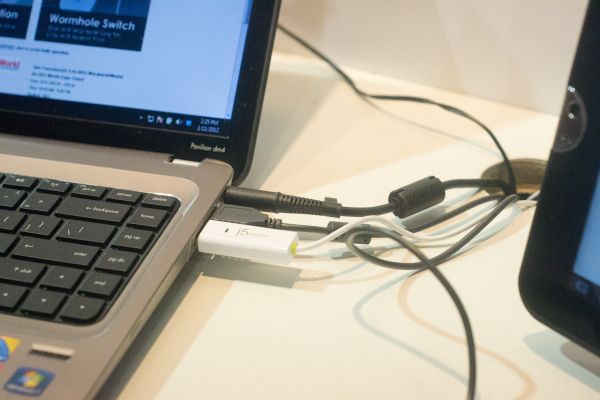
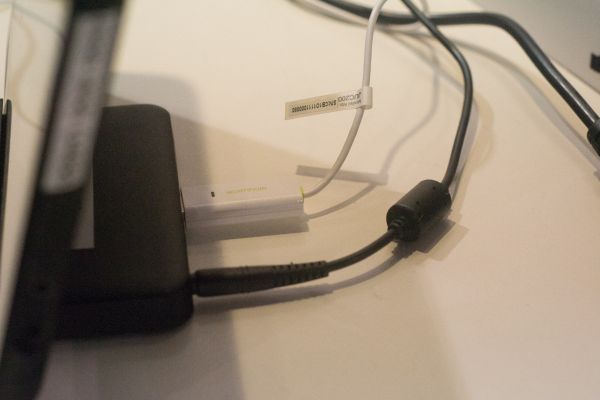
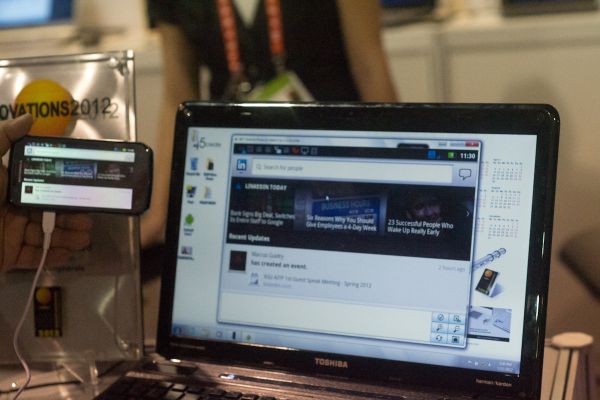


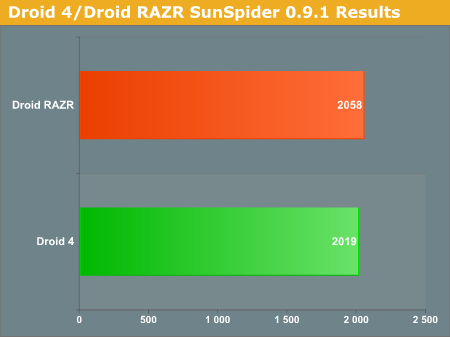


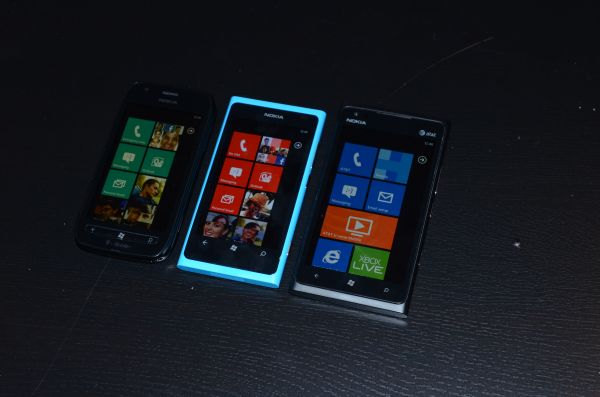






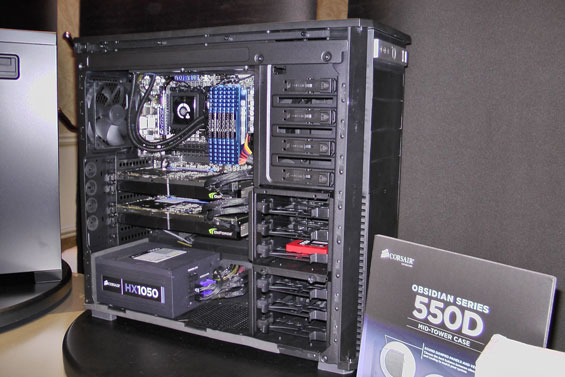
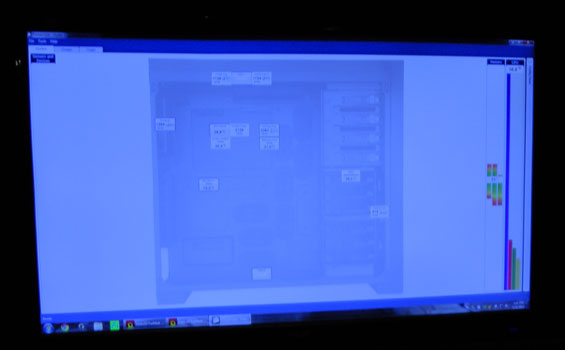

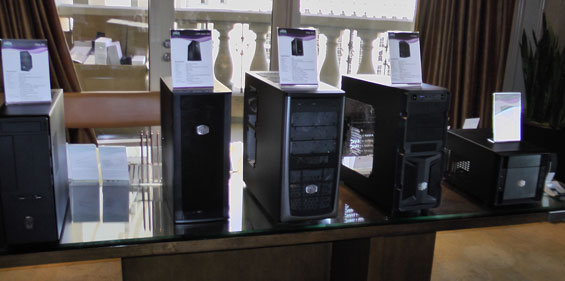

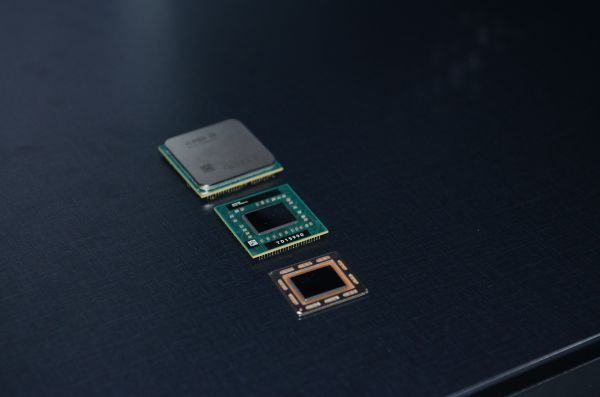
















Bookmarks